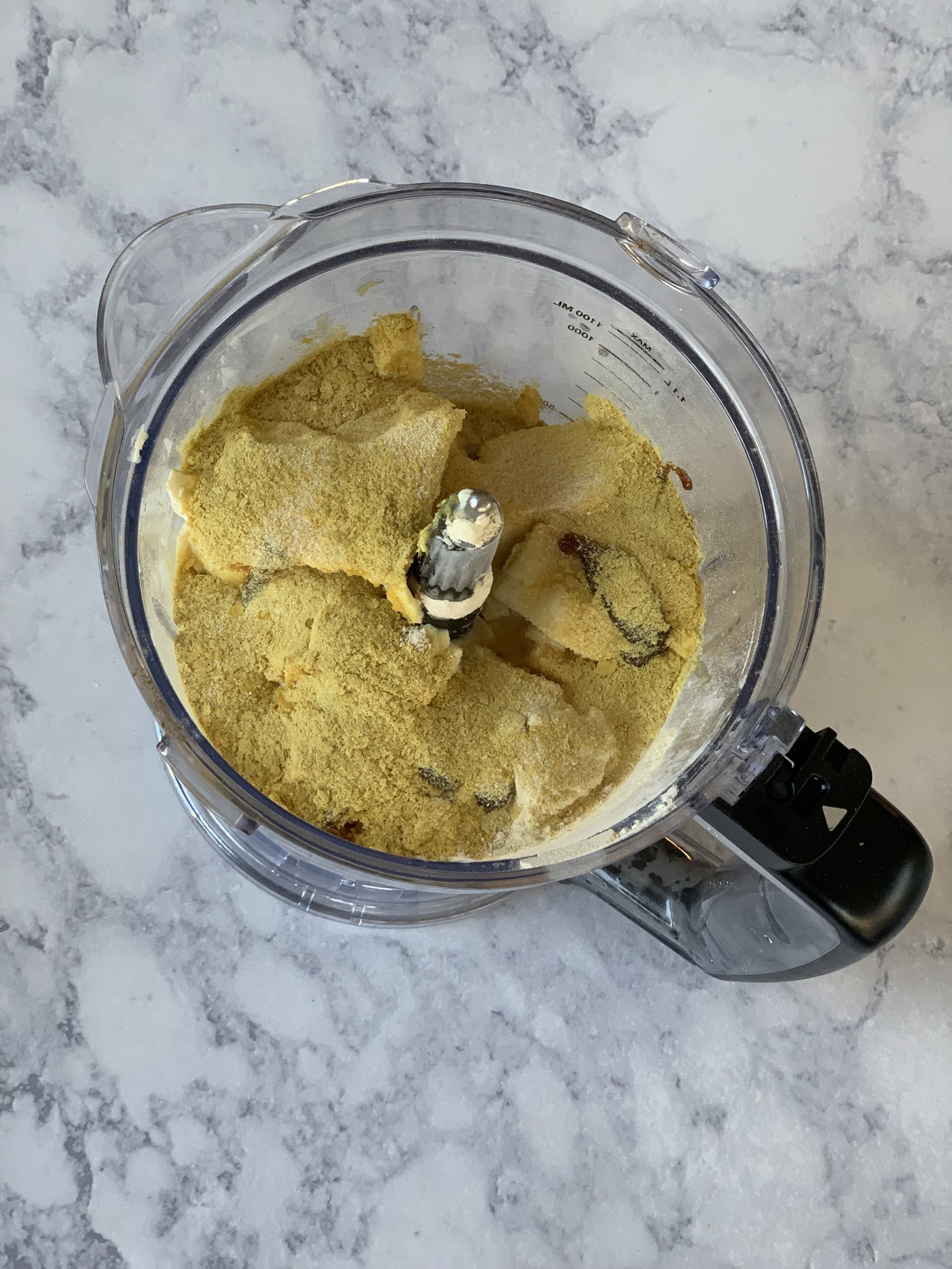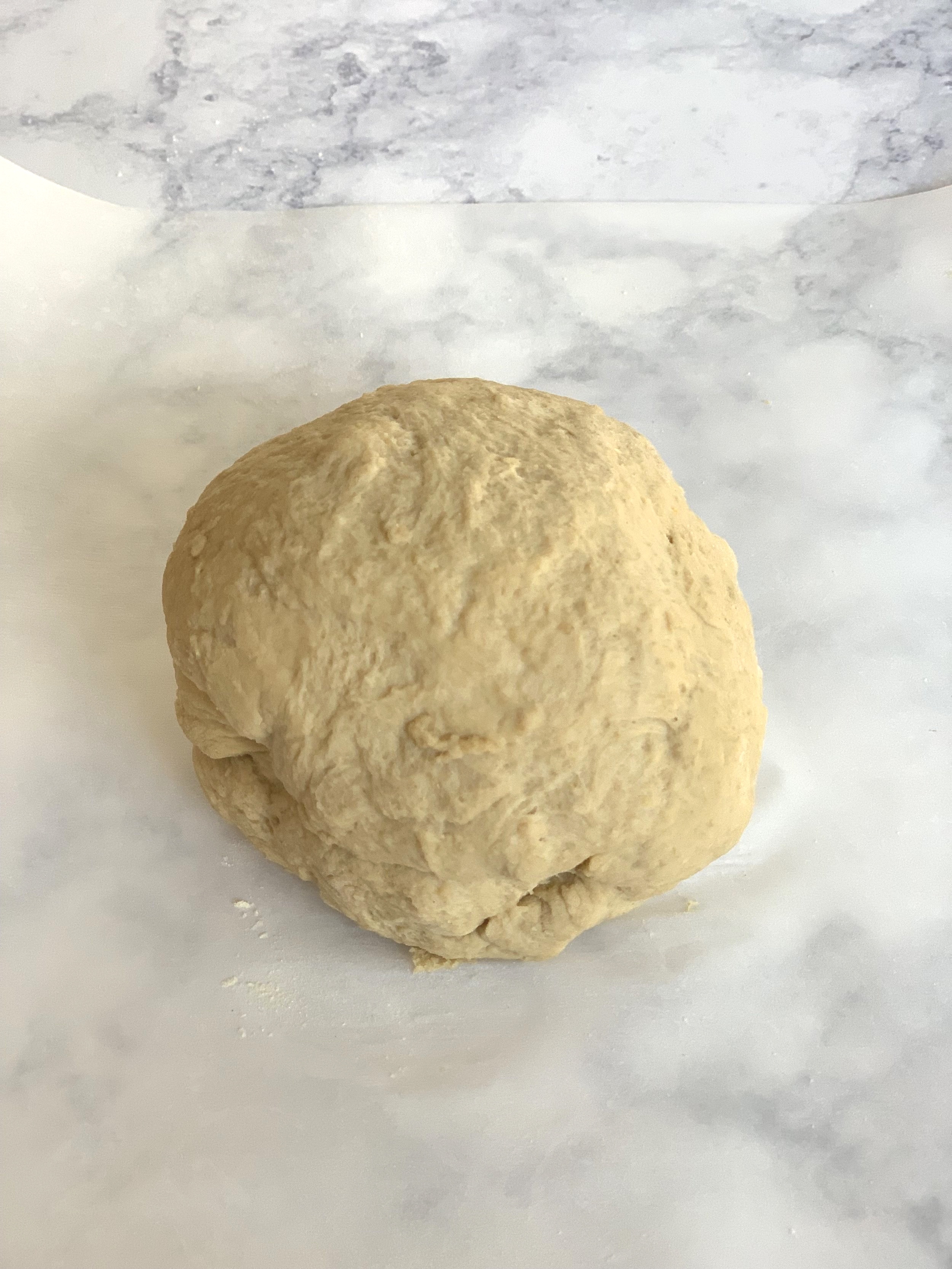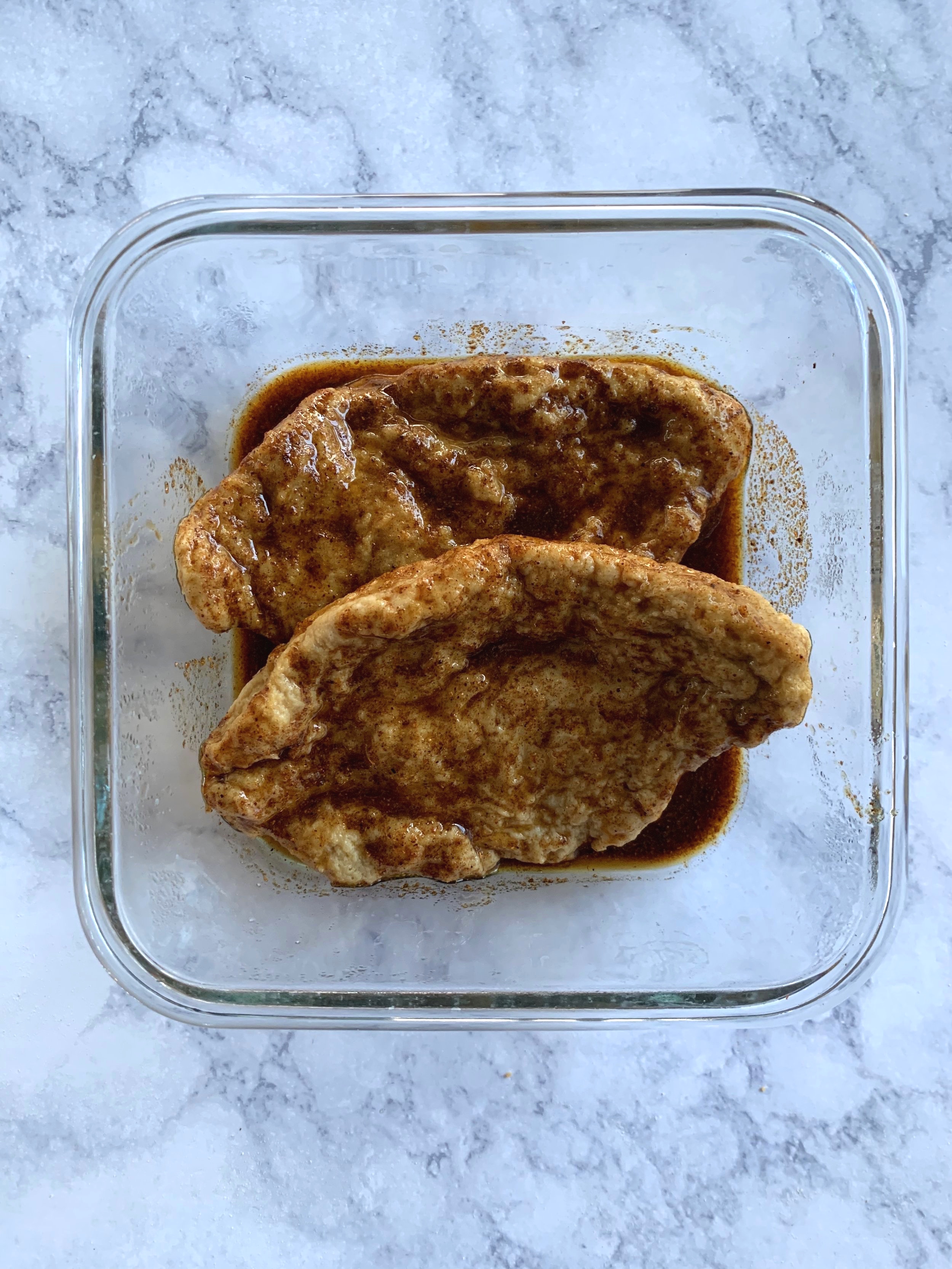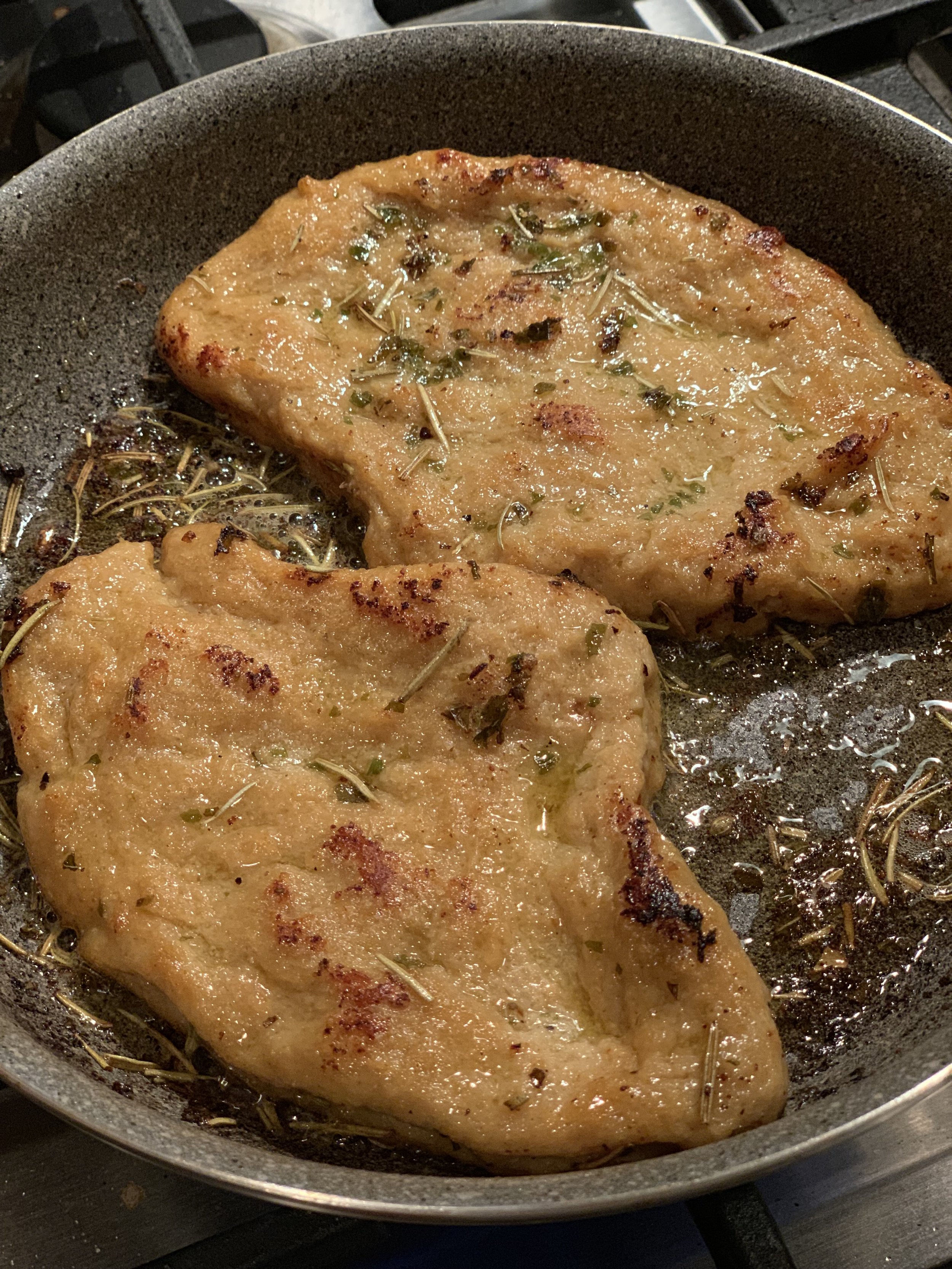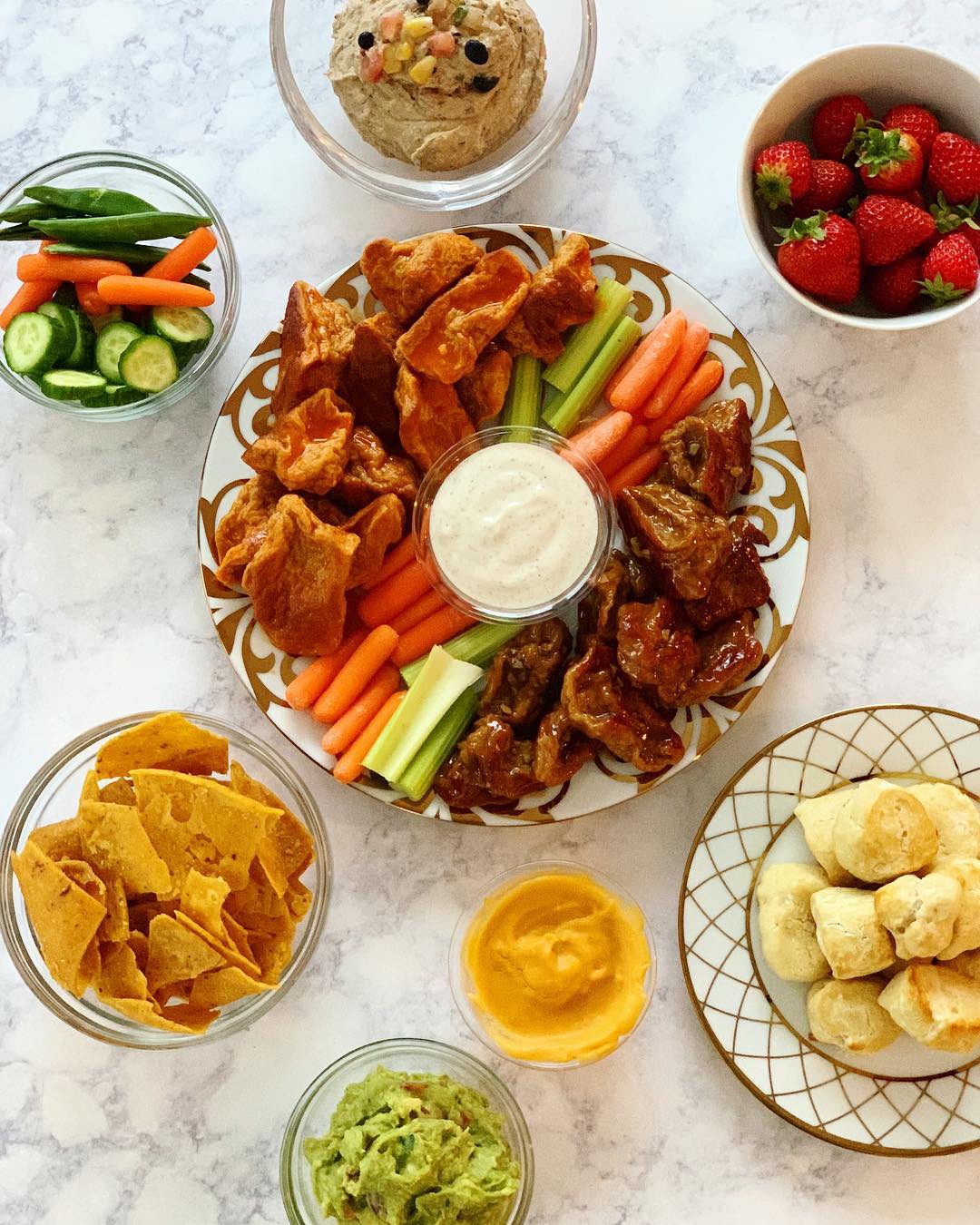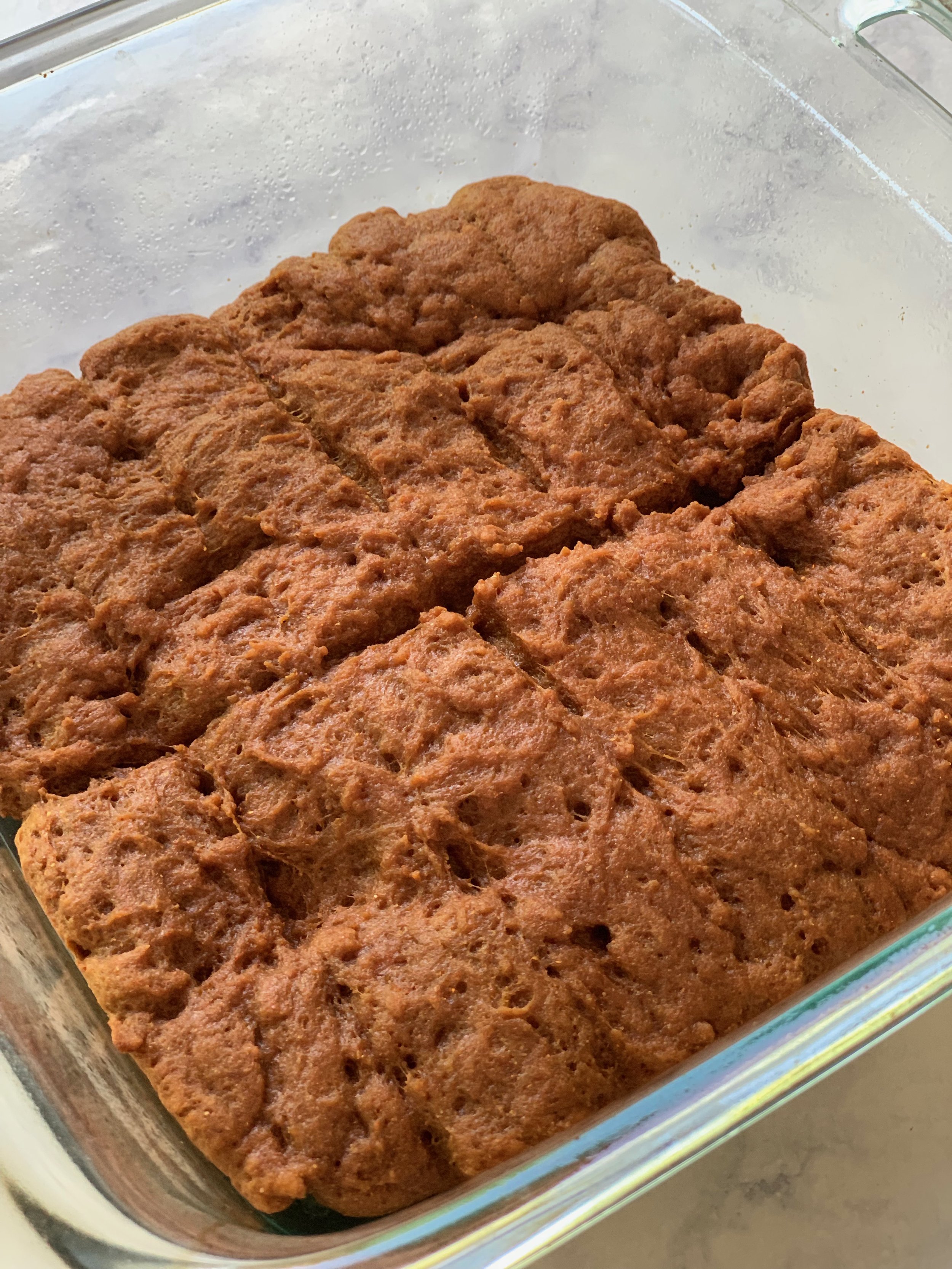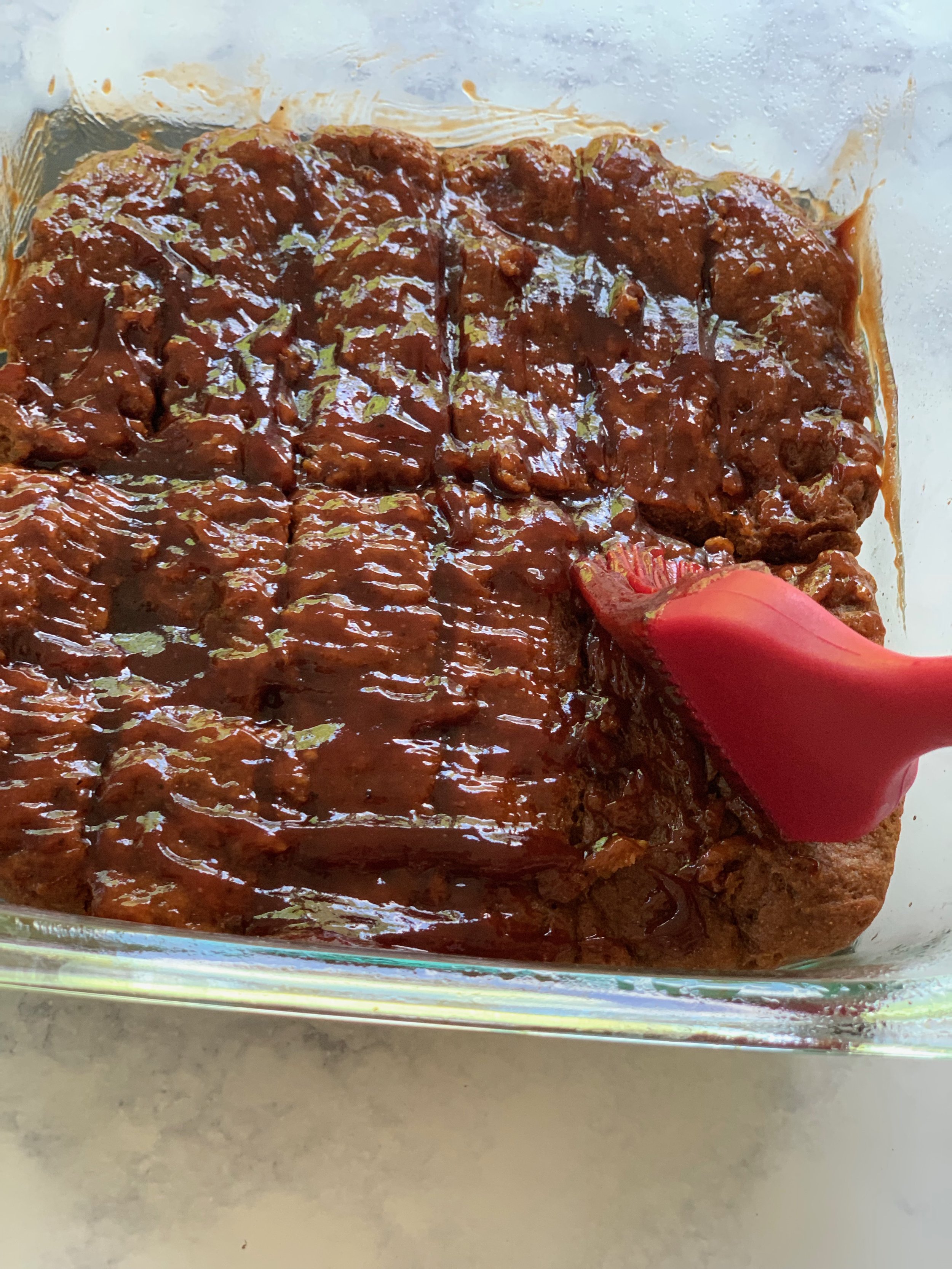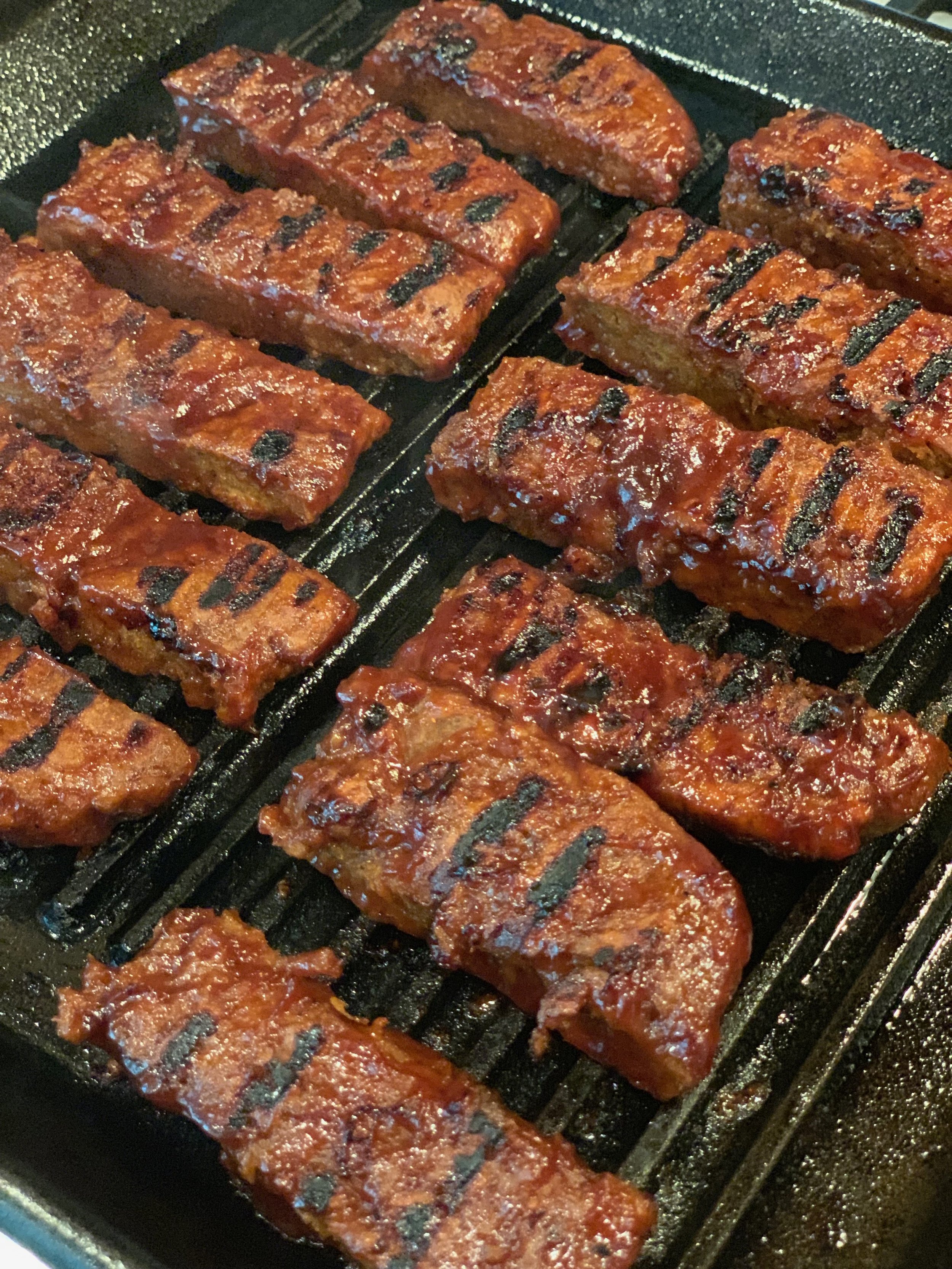How to Make Seitan at Home
What is seitan?
Seitan (pronounced ‘say-tan’) is a popular vegan meat substitute that you can find in stores, at restaurants, or make from scratch. It is made from hydrating wheat gluten, to mimic the texture of various conventional meat entrées depending on the technique and flavoring used.
Although seitan may be on the rise in vegetarian, vegan, or otherwise interested foodies, it is not a new discovery. Seitan dates back more than 2000 years, as a staple in parts of Asia.
Seitan is something I found myself only enjoying going out to eat, which got me interested in seeing if I could make seitan at home. I had a successful trial, and wanted to share with you what I’ve learned so far.
What is gluten?
Gluten is the general name of the proteins, glutelin and gliadin, found in grains. Together when hydrated they form gluten, which helps foods maintain their shape, providing structure, and acts as a glue holding it together.
The glutenin protein provides strength and elasticity, while the gliadin provides stretchiness. Gluten is only formed when the proteins are hydrated (i.e. dry flour does not technically have gluten until it is mixed in baking with wet ingredients that form the gluten linkages).
Grains that contain gluten include wheat, barley, rye, and triticale.
Some grains with different protein complexes that naturally do not contain gluten are corn, rice, buckwheat (confusing since wheat is in the name), quinoa, amaranth, and millet. Oats do not contain gluten, but may be contaminated while processed.
Fun Fact: When baking you may see recipes call for cake flour, bread flour, whole wheat flour, all-purpose flour, and all sorts of other types of flours. The difference in these flours include the different levels of proteins which results in lighter, fluffier products to dense, structured products. The type of flour matters in baking, this is why you could never make a successful angel food cake with bread flour!
Vital Wheat Gluten
Seitan is made from vital wheat gluten, and water (and some seasonings for flavor). Vital wheat gluten is essentially concentrated gluten with very little starch. Wheat flour is hydrated to activate the gluten, processed to remove mostly everything else except the gluten, dried, and ground back to a powder.
In addition to making seitan, vital wheat gluten is often called for in bread or baking recipes in small quantities to help with the rise, elasticity, and chewiness in the final product.
Where to get Vital Wheat Gluten
If you are unable to find vital wheat gluten at a store near you, here is a some brands found online: Anthony’s, Kate Naturals, Naturtonix, and Bob’s Red Mill (4 pack). I’ve personally only used Bob’s Red Mill, but they should all preform equally no matter the brand as long as you choose Vital Wheat Gluten, and not another type of flour.
As an Amazon Associate I earn from qualifying purchases.
Is Seitan Gluten-Free?
Hopefully, if you’ve read up until this point, it’s clear that seitan is most definitely not gluten-free, as its main ingredient, vital wheat gluten, is concentrated gluten. This question is asked frequently, so I just wanted that to be very clear for those with Celiac Disease or gluten intolerance.
Why is Seitan used?
There are many different reasons for consuming seitan, here are a few that come to mind:
It’s soy, egg, and nut-free - all of these are some of the most common allergens, which happen to be found in most other meat alternatives on the market. The specific recipe I followed did include soy and/or nut ingredients, but there are plenty of other recipes that exclude these if necessary
It’s low carb, high protein - the carbohydrate-rich components in wheat have been removed, leaving only the gluten proteins. Since it is often consumed as a meat replacement, it’s important to consider protein content for a balanced meal
It’s an additional meat alternative option - Variety is appreciated and explored for meat alternatives that mimic the taste and texture of meat. Seitan is often a departure from the tofu or tempeh 'norm’ for those who are vegetarian or vegan.
How to Make Seitan at Home:
I set out to find a recipe that was easy and descriptive since I had never made seitan before. I found a great recipe linked below; here are the steps I followed:
As I alluded to earlier, seitan is made by rehydrating vital wheat gluten with water to activate the gluten and form a dough. This results in a dense, spongy desired texture. In addition to a few other ingredients to flavor the seitan to mimic the particular meat of interest. This recipe calls for vegetable broth, silken tofu, nutritional yeast, garlic and onion powder in addition to the vital wheat gluten and water.
Add the ingredients to a food processor and mix to combine into a dough. I absolutely love my food processor attachment to my Ninja blender base, it came with a big blender attachment, a food processor attachment, and smoothie cups. I appreciate cutting down on several appliances by having these multiple attachments to the same base!
As an Amazon Associate I earn from qualifying purchases.
Kneading the dough helps form the gluten ‘network’ pictured in the diagram explaining gluten. This develops the elasticity and stretch, yielding the perfect texture for this intended use. For less chewy, tender seitan knead for a shorter time (less than 3 minutes). For chewier, denser seitan knead for longer in order to develop more gluten.
When a dough is formed, you can shape the seitan into whatever you’d like. The recipe I tested was for a “chicken” version, so I made oval-ish shapes to resemble a chicken breast.
Once shaped, you steam them for around 20 minutes. This method yields firmer seitan compared to simmering it. I used a steamer basket to do this. They will expand to almost double in size, so leave plenty of room.
Then you can marinade and cook as desired. You can marinate anywhere between 15 minutes and a couple days. The longer you marinate, the greater the flavor profile, I recommend at least overnight.
I was so impressed at how easy this was to make following this recipe! It seemed so intimidating to try, so I want to encourage you to experiment with new things if you are interested!
Here is the recipe I used—I highly recommend you check out this recipe if you want to make seitan!!
Other recipe notes:
I found that cooking in a skillet with leftover marinade a few minutes on each side, then throwing the whole skillet in the oven for 10 minutes (flipping halfway through), gave me the best flavor and texture!
I also think I could have kneaded mine longer to get a denser, less spongy texture (I only kneaded my dough for around a minute).
The recipe makes 6 pieces, and I chose 3 marinades to try out, so I’d have two ‘seitan tenders’ for each marinade to test out. She has really awesome marinade recipes that you can whip up in under 5 minutes, and use for anything (tofu, tempeh, seitan, or meat if that’s your preference). So if you don’t have any go-to marinades, I definitely recommend trying some of hers!
I like all of the ones I tried, and found them to be super versatile, incorporating italian seasoned seitan strips in a caesar salad, made a BLT-esque sandwich with the sweet & smoky marinade, and yummy mexican seasoned seitan for nachos and tacos (eaten before I could snap a picture.. oops!).
Nutrition Info:
Serving: 1 seitan tender
Provides 27 g protein, 1.3 g fiber, 1.9 g fat, for 156 calories (excludes nutrition from marinades)
Price:
Although these ingredients may seem expensive to some, a little goes a long way! It costs under $5 to make this recipe ($4.76 to be exact), and less than a $1 per serving! Pricing excludes marinade ingredient costs (most of these you probably already have on hand anyway!
seitan chicken wings
For the Super Bowl I made this same recipe into chicken wings for a vegan spin on some classic game day food.
The seitan recipe is the exact same, except for instead of rolling into 6 balls and making ovals, you just take a pair of kitchen scissors to the dough and cut off small pieces. You can shape these into ‘wing’ shapes if you’d like.
Steam them for 25 minutes, and chill them in the fridge for at least a half hour. Then pan fry them in 2 Tablespoons of canola oil, to brown each side. Toss in your favorite wing sauce, and eat them hot!
I did a buffalo sauce on half of them, and a sticky garlic sauce on the other half, and paired it with some vegan ranch dip (never been a fan of the blue cheese taste personally).
I was so excited when the creator of this recipe came out with this post, I couldn’t wait to try it! For the full recipe head over to her blog here! I seriously love everything I’ve made from her blog!
Check out my pictures making them below:
SEITAN VEGAN RIBS
New recipe— seitan vegan ribs! Just 10 ingredients, ready in under an hour, and less than $1 per serving! Click here for Recipe
Have you made seitan before? What recipes have you tried? Leave your questions below!



